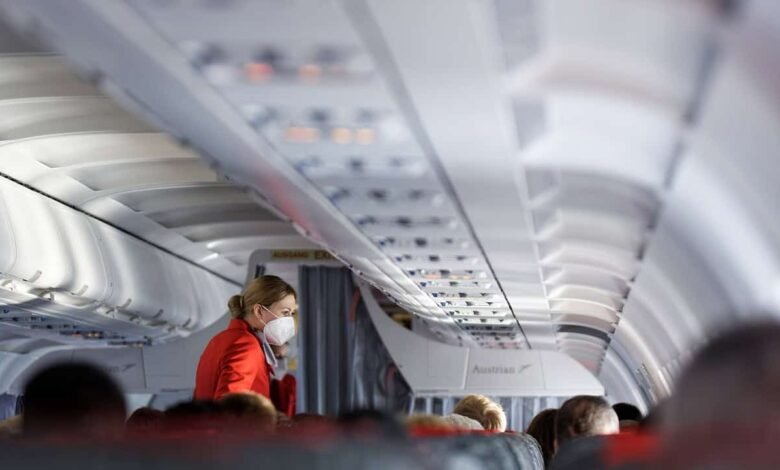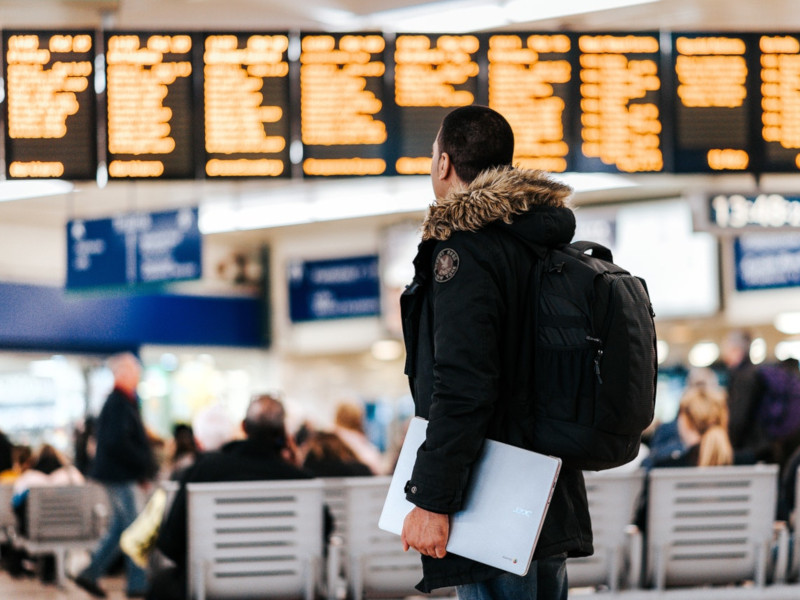Survival Tips for Long-Haul Flights

Long-haul flights can be physically and mentally exhausting, but with the right strategies, they can become more manageable. Sitting in a confined space for hours, adjusting to different time zones, and handling in-flight conditions can make the experience challenging for travelers.
If you’re booking plane tickets for a long journey, planning ahead can make all the difference. Whether you’re searching for cheap flights, managing Flight Tickets, or using flight booking platforms, understanding how to prepare for an extended flight will improve your comfort. Issues such as jet lag, dehydration, body stiffness, and boredom can be minimized with proper planning.
So, what are the best survival tips to ensure a smooth long-haul flight experience? Let’s explore practical strategies to help you arrive at your destination feeling refreshed and ready.
1. Choosing the Right Seat for Maximum Comfort
Seat selection plays a significant role in ensuring a comfortable long-haul journey. A well-chosen seat can provide extra legroom, minimize disturbances, and improve your ability to sleep.
Websites for flight booking typically allow travelers to select seats in advance. Reviewing seat maps and understanding the pros and cons of different options can help ensure a better experience. Choosing between a window, aisle, or middle seat can make a big difference.
A window seat is ideal for travelers who prefer sleeping against the wall, avoiding aisle traffic, and enjoying outside views. An aisle seat is best for passengers who want easy access to the restroom or like stretching their legs occasionally. Meanwhile, a middle seat is generally the least desirable but sometimes necessary for those traveling with companions. Solo travelers may prioritize privacy and uninterrupted rest, while those flying with family or friends might prefer sitting together.
For those who need extra space, opting for an exit-row seat or an extra-legroom option can significantly improve comfort. Premium economy is another excellent choice for long-haul flights, offering wider seats, enhanced recline, and additional legroom at a fraction of the cost of business class. If your flight exceeds eight hours, upgrading might be worth the extra expense. Additionally, some flights offer sleeping pods or lie-flat seats, which are a great investment for those looking to arrive well-rested.
2. Dressing Smart: What to Wear for a Long Flight
Wearing the right outfit can make a major difference in your flight experience. Since airplane cabins often fluctuate between warm and cold temperatures, layering is essential.
Loose, breathable fabrics such as cotton or moisture-wicking materials are recommended. Compression socks help prevent swelling in the legs, and slip-on shoes make it easier to go through security and move around the cabin. Tight clothing or stiff fabrics should be avoided as they can restrict movement and cause discomfort over long hours.
Packing an extra pair of socks and a light sweater or blanket in your carry-on ensures additional comfort during colder portions of the flight. It is also helpful to bring a scarf or shawl, which can serve multiple purposes, from providing warmth to acting as an additional pillow.
3. In-Flight Essentials: What to Pack in Your Carry-On
Packing the right carry-on items can help alleviate discomfort and make the flight experience more enjoyable. Websites for flight booking provide information on baggage allowances, so be sure to check size restrictions before packing.
Some must-have travel accessories include a neck pillow and eye mask for comfortable sleep, noise-canceling headphones to block out cabin noise, and compression socks to help prevent leg swelling and deep vein thrombosis (DVT). Bringing a reusable water bottle is also essential, as staying hydrated can reduce jet lag and dryness. Additionally, packing snacks like nuts or protein bars ensures that you have access to healthy, non-perishable food options during the flight.
Maintaining freshness throughout the flight is equally important. Drinking plenty of water while avoiding excessive caffeine or alcohol can prevent dehydration. Packing personal hygiene items like a toothbrush, face wipes, deodorant, and lip balm helps keep you feeling refreshed. Applying moisturizer periodically can also help combat dry cabin air and keep your skin hydrated. Some travelers also bring facial mist sprays and hand sanitizer to stay clean and refreshed throughout the journey.
4. Beating Jet Lag and Staying Energized
Jet lag is one of the biggest challenges of long-haul flights, often disrupting sleep patterns and causing fatigue. Adjusting your schedule before departure can help ease the transition to a new time zone.
Gradually shifting your sleep schedule a few days before flying can help your body adjust. Using melatonin supplements when necessary can regulate your internal clock, while exposing yourself to natural light upon arrival can speed up the adaptation process. Avoiding heavy meals or excessive caffeine close to bedtime can also improve sleep quality.
During the flight, staying active is essential. Walking around the cabin, stretching, and performing in-seat exercises can reduce stiffness and improve circulation, ultimately helping you feel more energized upon arrival. Some passengers also use breathing exercises and meditation to help their bodies relax and adjust more smoothly.
5. Keeping Yourself Entertained
Long-haul flights can be tedious, so having a variety of entertainment options is key to passing the time. Preloading movies, e-books, and music onto your device ensures that you have entertainment even if in-flight options are limited. Engaging in mindful activities like journaling, puzzles, or meditation can also help you stay mentally relaxed. Noise-canceling headphones can enhance the experience by blocking out background noise.
Interacting with fellow travelers or engaging in light conversation can also help break the monotony of the flight. While some airlines offer Wi-Fi, connection speeds can be slow, so downloading entertainment in advance is always a smart move. Additionally, many travelers find it helpful to bring a travel journal to document their experiences and plan their itinerary for when they arrive.
6. Nutrition and Hydration for Long Flights
Eating the right foods before and during the flight can make a significant difference in your energy levels and overall comfort. Heavy, greasy foods can cause bloating and discomfort, while lighter meals rich in protein and fiber help sustain energy.
It is essential to stay hydrated during long flights, as cabin air tends to be very dry. Drinking water regularly and avoiding excessive caffeine or alcohol can prevent dehydration and fatigue. Bringing herbal tea bags or electrolyte tablets can also help maintain hydration and keep you feeling refreshed.
Conclusion
Surviving a long-haul flight is all about preparation and smart planning. Choosing the right seat, dressing comfortably, packing essential items, and staying hydrated can make an extended journey significantly more enjoyable.
When booking Flight Tickets or securing plane tickets, planning for comfort should be just as important as finding cheap flights. A little foresight goes a long way in ensuring a stress-free trip.
For travelers looking for hassle-free flight booking, FlyToday provides convenient options and customer-friendly policies, making long-haul travel easier. Whether you’re flying for business or leisure, using these survival tips can help you arrive at your destination feeling refreshed and ready to explore.
Similar posts:









